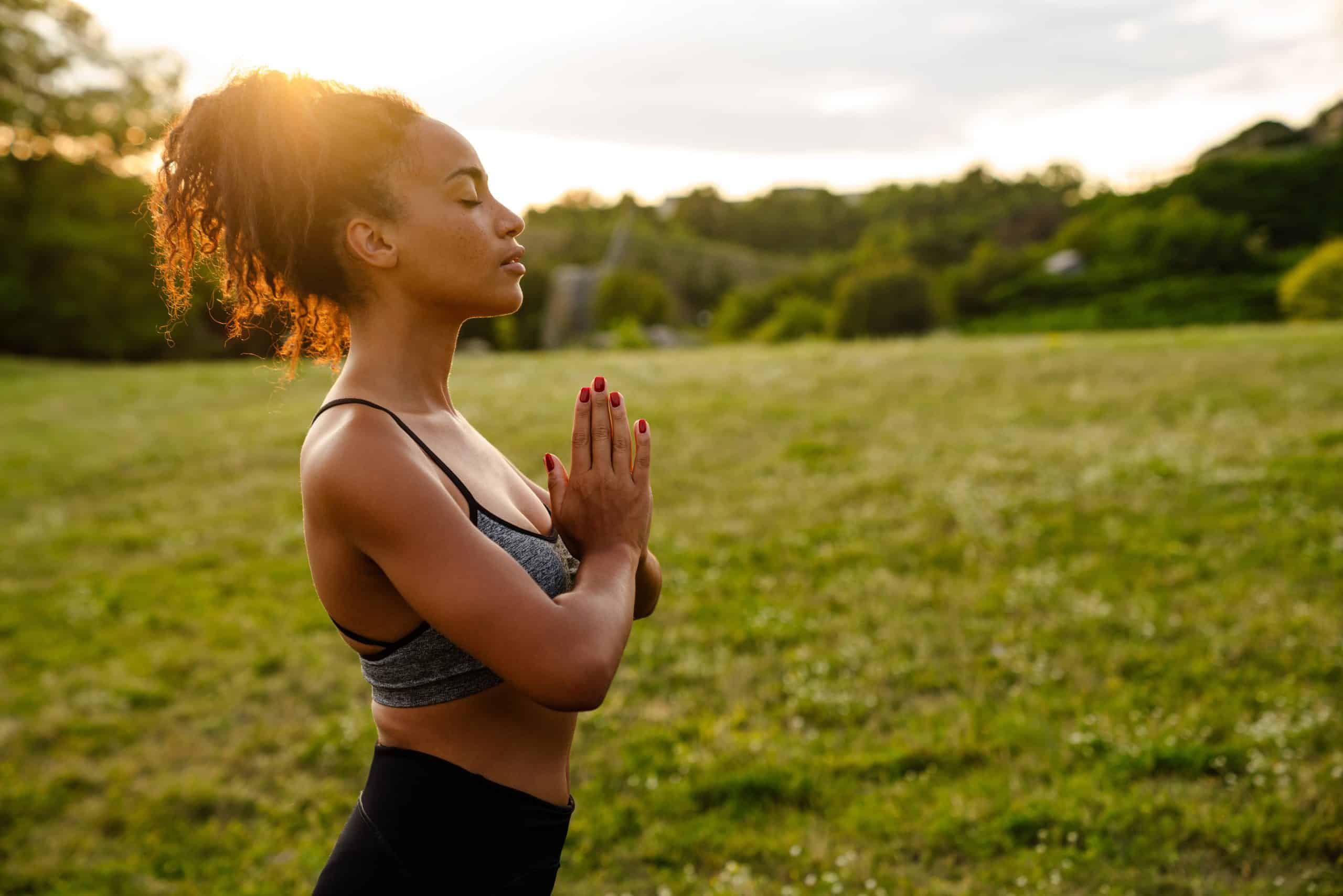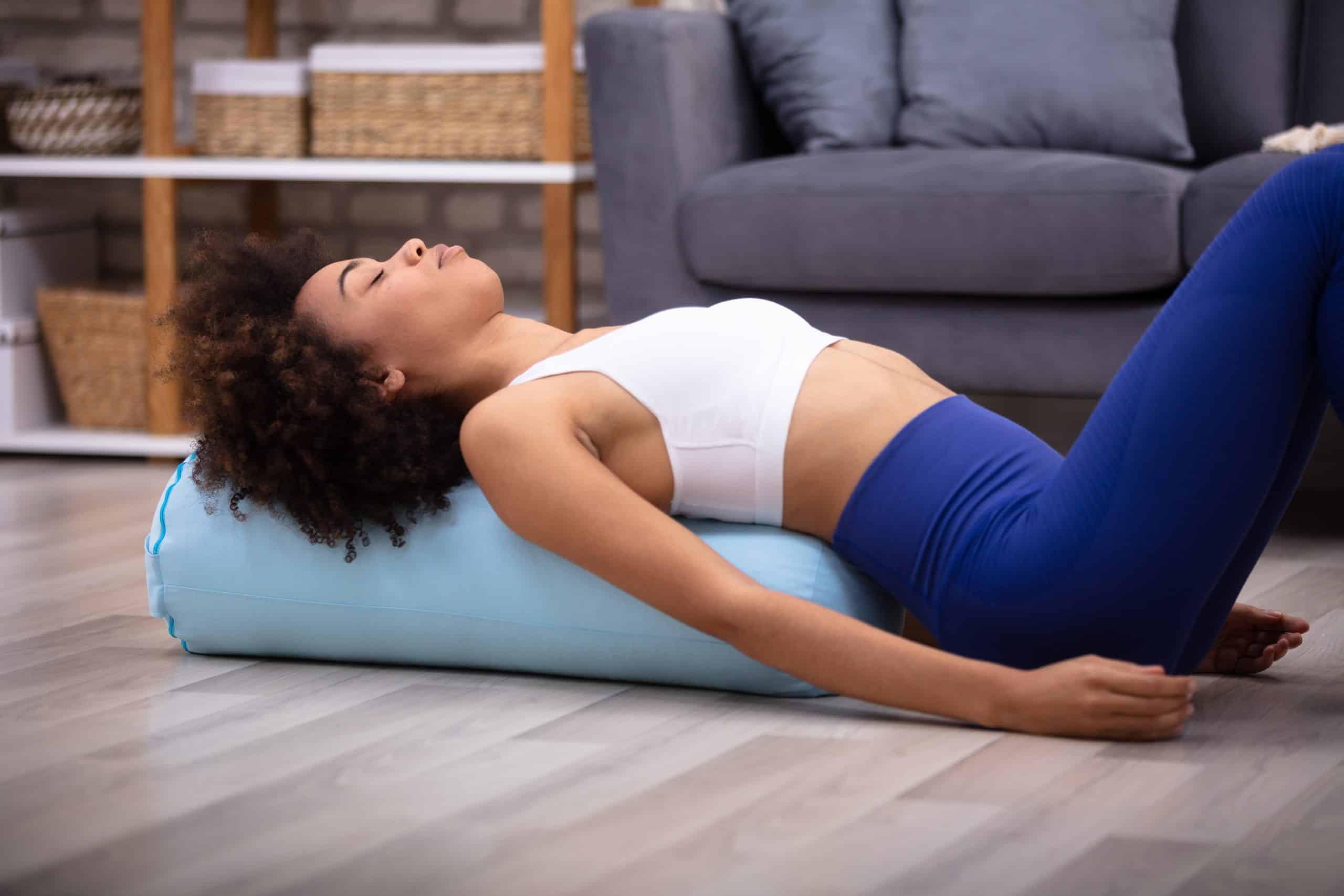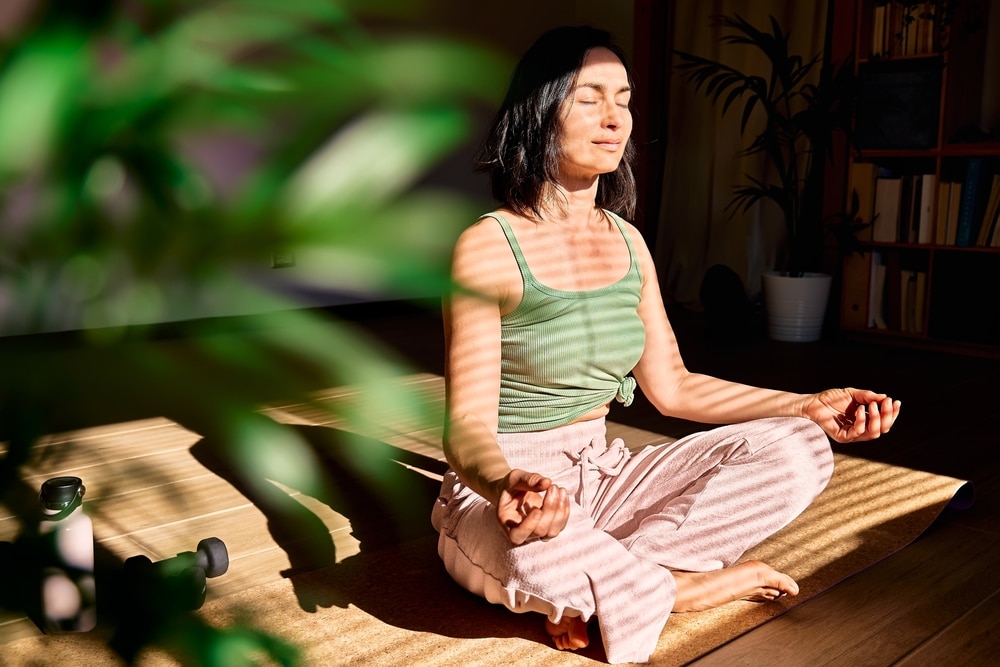Most people don’t go into a meditation session expecting to cry, but it’s not uncommon for this to happen. When looking into meditation as a practice, you’ll likely be presented with serene calm environments where you’ll probably bump into happy, calm, and relaxed people – this is what attracts many people to the practice of meditation.
However, once you get into your first meditation session, instead of the calm you thought you were going to achieve, you may end up finding yourself crying, sometimes downright sobbing without understanding why this is happening.
So why do some people find themselves shedding tears during meditation? Read on to find out.
Crying During Meditation: Is It Normal to Cry During Meditation?
Yes, it’s normal to experience episodes of intense emotions and tears when meditating. There are many ways to define meditation, but the ones we’re most familiar with are:
- Meditation is the art of being serene and alert in the present moment, instead of constantly struggling to change (1).
- Meditation is a mind and body practice that focuses on interactions between the brain, mind, body, and behavior, containing four key elements: a quiet location with few distractions, a comfortable posture, a deep focus of attention, and an open attitude (2)
- Meditation is an exercise in which the individual turns attention or awareness to dwell upon a single object, concept, sound, image, or experience, with the intention of gaining greater spiritual or experiential and existential insight, or of achieving improved psychological well-being (1).
This practice has been linked to a myriad of health benefits, including mental health benefits such as reducing stress and pain, decreasing anxiety and depression, and improving memory and focus (3,4). Meditation has also been proven to have physiological benefits such as reduced blood pressure, heart rate, cortisol, and cholesterol levels, and increased melatonin (3, 4).
So if this practice has all these benefits, particularly mental health benefits such as reducing stress, anxiety, and depression, why may you find yourself shedding tears during meditation? How do these two matters relate to each other?
Why You May Find Yourself Crying While Meditating
We’ve compiled a list of potential reasons as to why you may be having such an emotional meditation experience and what you may be able to do to improve your experience during meditation.
- The Rise of Difficult Emotions
As a practice, meditation is praised for its benefits in emotional regulation – an ability that helps one exert control over one’s own emotional state (5, 6). Some types of meditation techniques, specifically mindfulness, require you to calm your mind and accept any feelings, thoughts, and emotions that may arise during the session without any judgment (7).
Unfortunately, emotional regulation and the acceptance of all thoughts, feelings, and emotions without judgment doesn’t happen immediately when you start meditating. It takes time to learn and cultivate the ability, so it happens over time. This means that in the beginning, as you meditate, you may find that you’re faced with some unwanted and heavy thoughts and feelings that may overwhelm you and make you cry.
Check out our article on somatic healing techniques for guidance on how to work through and manage your trauma.
- Increased Self-Awareness
According to Study.com, self-awareness is the ability to understand that the self is separate from others. When you’re self-aware, you can recognize and label your own feelings, thoughts, and behaviors and assess your physical, mental, and emotional states. This helps you understand various aspects of your internal personality and how they allow you to interact with the external world (8).
Meditation has been proven to help boost self-awareness, which is good, but the potential emotional experience that comes along with it may not be the easiest thing to face (9, 10). The process of meditation often leads to deep self-reflection and introspection, which can be helpful when it comes to trying to work through past trauma and current struggles. Although this process can be helpful, it can also be very emotionally challenging and could lead to some tears.
If you wish to reach into the deep crevices of your mind, take yourself out of the mental loop, regain balance, infuse yourself with optimism, and cultivate compassion – BetterMe: Meditation & Sleep app is exactly what you need!
- A Sudden Wave of Happiness and Peace
Not all tears that are shed during meditation are sad tears as the result of negative emotions being triggered. Sometimes, this experience can trigger big and happy emotions and ultimately lead to tears of joy or happy realization. If you experience a sudden surge of emotions that touch you deeply and make you feel the need to cry, you should let the emotions flow through you as needed and allow the tears to fall.
Many people start meditating as they feel overwhelmed by stress or anxiety. As previously mentioned, this practice has proven, in some cases, to be beneficial when it comes to helping individuals work through feelings of stress and anxiety. Someone who finds relief from anxiety or stress through this practice could find themselves crying in happiness over the peace, calm, and relaxation they find from it.
- A Deep Sense of Gratitude
Gratitude meditation is a meditation technique that encourages participants to list the things they’re happy and grateful for. This practice is known for helping encourage optimism, relieve depression, improve immune function, lower blood pressure, and strengthen relationships with others (11, 12, 13).
Negativity bias is a cognitive bias that makes you pay more attention to and put greater weight on the negative matters in your life while disregarding or discrediting the positive or neutral things. If this is something you struggle with, then it may make meditating extra challenging.
This bias can lead you to clearly remember moments from your past when you felt humiliated or traumatized and songs can lead to feelings of sadness and ultimately tears. This bias can also cause you to remember insults you’ve received rather than praise and even encourage you to think about negative things more frequently than positive ones (14, 15).
Check out our 28-day somatic exercise for trauma relief article to learn how to better deal with stored trauma in the body.
- You Achieve Self-Compassion
Also known as self-kindness, this is the ability to treat yourself with the same kindness, concern, and support you would show to a good friend (16). More often than not, people tend to criticize themselves quite harshly for their personal failures and inadequacies – much more than they would criticize a loved one if they had the same failures and inadequacies.
As with meditation and mindfulness, research has also shown that self-compassion can foster life satisfaction, happiness, optimism, positive affect, spirituality, emotional intelligence, coping skills, self-improvement motivation, and overall psychological well-being.
If you’ve been overly critical of yourself before, mindfulness can help you achieve self-kindness, which can make you cry (17).
- You’ve Achieved Spiritual Awakening
Not everyone goes into meditation for the mental and physical benefits. Some go into this practice with the hope of connecting with a higher power or the divine.
Research has shown that some people have achieved sudden states of awakening through contemplative practices such as yoga, meditation, and mindfulness (18).
If someone has been desiring to experience spiritual awakening for a long time and they finally achieve it, they may end up crying.
Read more: Somatic Pilates: The Ultimate Guide to Mindful Exercise
What to Do When You Start Crying During Meditation?
Let’s be honest, the knee-jerk reaction that most of us would have when realizing that we’re crying during meditation would be to quickly put a stop to it. However, this isn’t the right thing to do.
Here’s what to do when you realize that you’re shedding tears during meditation:
- Acknowledge the Feeling That’s Making You Cry
Whether it’s a good or bad feeling, make sure you acknowledge it and take a minute to examine it. Most people aren’t usually ready to face the negative feelings in their lives. In fact, many people beat them down and bury them deep, choosing to move on without dealing with them.
When they pop up during meditation, you should resist the need to bury them again, and instead examine them. All your emotions, whether good or bad, are valid and dealing with them will help you release them and unburden yourself.
- Cry It Out
Crying is never a bad idea. In fact, research has shown that crying can help improve your mood and relieve stress (19, 20). So whether you’re crying tears of joy or sadness, let the tears flow freely and as needed.
Talk to Someone About It
Crying during meditation can leave you feeling raw and vulnerable. Once you’re done with your session, take some time to talk to someone you trust about your experience and feelings. This will help you unburden yourself even more.
- Try Journaling
If you don’t have someone to talk to, this may be a good option for you. Journaling has gained great popularity in recent years and for good reason. This practice helps keep your thoughts organized, boosts memory, and improves creativity, among other things. In terms of mental health, journaling can help you manage anxiety, reduce stress, and cope with depression (21, 22).
Once you’re done crying, take out your journal and list your reasons for crying during meditation. If the reasons for your tearing up were bad, this practice will help you prioritize the problems, fears, and concerns that are plaguing you. It also gives you a great opportunity to practice positive self-talk, which can help do away with any negative feelings you have toward yourself that may have arisen while meditating.
What Happens When You Meditate?
As mentioned above, this practice has multiple beneficial effects on the body and mind, including reduced stress and anxiety, management of depression, improved mood, reduced cholesterol levels, and lowered blood pressure.
Is It Normal to Fall Asleep During Meditation and How Can You Put a Stop to It?
Like crying during meditation, falling asleep during meditation is a common occurrence. It may surprise you that this is a problem for beginners and advanced and long-term practitioners. An important fact to remember is that one of the main goals of this practice is to slow down the thought process and relax. If you’re relaxed and calm, you’re more likely to start feeling drowsy or end up falling asleep.
Despite this being quite normal, it can also be frustrating. Here are some tips that may help you stay awake the next time you meditate:
- Do It While Sitting Upright
Lying down while meditating can encourage you to sleep. However, when you’re seated, you’re less likely to doze off as the position isn’t the most relaxing and if you sleep, you may end up falling down.
- Don’t Meditate in Bed
This applies the same logic as meditating while lying down. A warm comfortable bed encourages sleep, so while you want a comfy bed and cozy space to practice in, just make sure you aren’t cozy enough to fall asleep.
- Try Sitting in Front of a Window or Outside on the Balcony
The fresh air and breeze (if any) may help keep you awake and provide you with some energized feelings. It can also help if there are bright rays of sun coming into the room where you’re meditating.
If you’ve dipped your toes in meditation before but couldn’t sit through a session because of all the thoughts buzzing in your head, impulses snatching away control or all the overwhelming feelings that start bubbling up the minute you sink into the silence, it’s only because you didn’t have the right guidance. Start using BetterMe: Meditation & Sleep app and watch your life transform!
- Meditate in the Morning, Rather Than at Night
Trying to meditate when you’re exhausted after a long day will most likely end with you falling asleep. It’s a better idea to meditate a bit after you wake up or any time before you get your day started.
- Don’t Meditate Right After Waking Up
While meditating in the morning is a good idea, you shouldn’t meditate immediately after you wake up. When you first wake up, your mind and body may not be fully awake yet and this may cause you to doze off. Once you get up, walk around a bit, brush your teeth, have a cup of tea, and then meditate.
- Get out of the House
You don’t have to only meditate in the house. You can meditate while walking in nature, sitting outside on a park bench, or lying under a tree outside to meditate.
- Don’t Meditate After Eating a Big Meal
Large and heavy meals always put you in a drowsy state. If you choose to do this calming exercise after a big meal, then you’ll most probably end up falling asleep during meditation.
What Is Meditation Like?
If you’re wondering what meditation feels like, the truth is that it really isn’t the same way for everyone. Trying to pinpoint what it feels like will only lead to distraction or possibly frustration, which is the exact opposite point of this practice.
Read more: Somatic Exercises for Releasing Grief
What Is the Purpose of Mantras During Meditation?
The main purpose of having a mantra during meditation is to help keep you focused on the task at hand. Concentration during this exercise isn’t often easy to come by and many people find their minds wandering.
However, having a phrase to repeat over and over helps keep your mind from drifting. A mantra can also help reinforce your meditation goals. For example, if you’re meditating for anxiety or depression, repeating phrases such as ‘All is well, I am enough’ or ‘This too shall pass’ can help pull you out of this state.
Breathwork is a type of meditation that involves breathing techniques and patterns that intentionally channel and focus to help boost relaxation, relieve stress and anxiety, and enhance mood (23). Meditation as a whole, regardless of type, can lead to crying due to multiple reasons. Try thinking back to how you felt or what you thought about just before the tears fell and this may explain why you ended up crying. Sudden outbursts of emotion such as crying or anger are a clear sign of trauma release. Other signs may include sudden relaxed muscles, a change in breathing patterns, better sleep, and being able to find more joy in your life. Meditation may play a role in a person’s ability to release trauma. Studies of mindfulness and yoga have shown that practices related to meditation are beneficial for PTSD patients and that they can be used as complementary approaches to the treatment and management of the traumas that people face (24, 25). Trauma is generally stored in the memory and emotional centers of the brain, which are the hippocampus and amygdala. That being said, trauma can also have a physical component and some people may experience tension throughout the body that is the result of trauma. Frequently Asked Questions
Why do I cry during breathwork?
How do you know your body is releasing trauma?
Can you release trauma through meditation?
Where is trauma stored in the body?
The Bottom Line
If you find yourself crying during meditation, this is normal and you shouldn’t feel any shame for doing it. It shows that you’re getting in touch with your emotions and starting to become more self-aware.
Whether you’re shedding tears of joy, gratitude, sadness, or anger, let them flow and cry to your heart’s content. Once you’re done, if your tears were encouraged by negative emotions, take some time to analyze your feelings, where they came from, and what you can do to change the situation that made you feel this way. Doing this may help you get rid of any suppressed feelings that are bringing you down.
DISCLAIMER:
This article is intended for general informational purposes only and does not serve to address individual circumstances. It is not a substitute for professional advice or help and should not be relied on for making any kind of decision-making. Any action taken as a direct or indirect result of the information in this article is entirely at your own risk and is your sole responsibility.
BetterMe, its content staff, and its medical advisors accept no responsibility for inaccuracies, errors, misstatements, inconsistencies, or omissions and specifically disclaim any liability, loss or risk, personal, professional or otherwise, which may be incurred as a consequence, directly or indirectly, of the use and/or application of any content.
You should always seek the advice of your physician or other qualified health provider with any questions you may have regarding a medical condition or your specific situation. Never disregard professional medical advice or delay seeking it because of BetterMe content. If you suspect or think you may have a medical emergency, call your doctor.
SOURCES:
- What Is Meditation? Proposing an Empirically Derived Classification System (2019, ncbi.nlm.nih.gov)
- Defining Meditation: Foundations for an Activity-Based Phenomenological Classification System (2022, frontiersin.org)
- Meditation: Process and effects (2015, ncbi.nlm.nih.gov)
- Meditation and Its Mental and Physical Health Benefits in 2023 (2023, ncbi.nlm.nih.gov)
- Brief Mindfulness Meditation Improves Emotion Processing (2019, ncbi.nlm.nih.gov)
- Meditation and the wandering mind: a theoretical framework of underlying neurocognitive mechanisms (2021, ncbi.nlm.nih.gov)
- Mindfulness meditation: A research-proven way to reduce stress (2019, apa.org)
- Self-Awareness | Definition, Types & Examples (2023, study.com)
- The Mindful Self: A Mindfulness-Enlightened Self-view (2017, ncbi.nlm.nih.gov)
- Self-awareness, self-regulation, and self-transcendence (S-ART): a framework for understanding the neurobiological mechanisms of mindfulness (2012, ncbi.nlm.nih.gov)
- Effects of gratitude meditation on neural network functional connectivity and brain-heart coupling (2017, ncbi.nlm.nih.gov)
- Effects of gratitude intervention on mental health and well‐being among workers: A systematic review (2021, ncbi.nlm.nih.gov)
- The effects of gratitude interventions: a systematic review and meta-analysis (2023, ncbi.nlm.nih.gov)
- Not all emotions are created equal: The negativity bias in social-emotional development (2008, ncbi.nlm.nih.gov)
- The negativity bias: Conceptualization, quantification, and individual differences (2008, cambridge.org)
- Self-Compassion: What It Is, What It Does, and How It Relates to Mindfulness (2015, link.springer.com)
- Mindfulness and Self-Compassion: Exploring Pathways to Adolescent Emotional Well-Being (2015, ncbi.nlm.nih.gov)
- Spontaneous Spiritual Awakenings: Phenomenology, Altered States, Individual Differences, and Well-Being (2021, ncbi.nlm.nih.gov)
- Is Crying Beneficial? (2008, researchgate.net)
- When and for whom does crying improve mood? A daily diary study of 1004 crying episodes (2011, sciencedirect.com)
- Journaling for Emotional Wellness (n.d., urmc.rochester.edu)
- Online Positive Affect Journaling in the Improvement of Mental Distress and Well-Being in General Medical Patients With Elevated Anxiety Symptoms: A Preliminary Randomized Controlled Trial (2018, ncbi.nlm.nih.gov)
- Brief structured respiration practices enhance mood and reduce physiological arousal (2023, ncbi.nlm.nih.gov)
- Mindfulness-based treatments for posttraumatic stress disorder: a review of the treatment literature and neurobiological evidence (2018, ncbi.nlm.nih.gov)
- Meditation and Yoga for Posttraumatic Stress Disorder: A Meta-Analytic Review of Randomized Controlled Trials (2018, ncbi.nlm.nih.gov)









